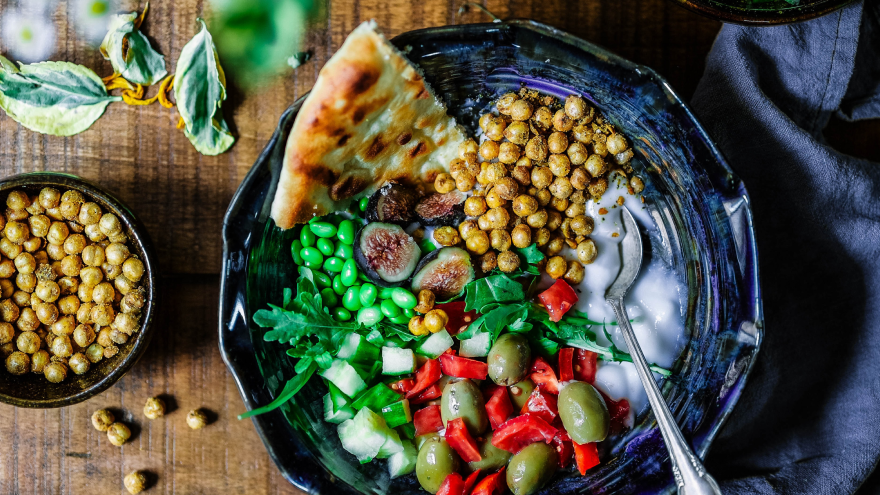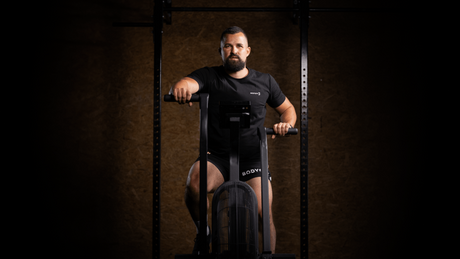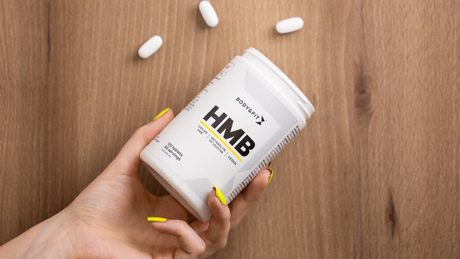You’ll often hear the term ‘cutting’ in the world of fitness and sports nutrition. It refers to reducing your body fat percentage while maintaining as much muscle mass as possible. Many strength trainers and bodybuilders go through a ‘cutting diet’ or ‘cutting phase’ to get that ripped, shredded look. In this article, we’ll discuss the most effective ways you can achieve this yourself, the supplements that can make the process easier, and the difference between cutting and weight loss.
What is a cutting diet?
A cutting diet is a method used to reduce your body fat percentage while maintaining muscle mass. It’s achieved through keeping the body in a calorie deficit, doing strength training, and getting in plenty of cardio. The goal of a cutting diet is to expose the muscles and get that ripped, shredded or cut look.
What is the difference between a cutting diet and bulking?
If you’ve come across ‘cutting’, you’ve probably heard of ‘bulking’, too. Bulking refers to building muscle mass through a combination of strength training and consuming more calories than you burn (maintaining a calorie surplus). Essentially, cutting is the opposite — a combination of strength training (plus cardio) and consuming less calories than you burn.
If you want to gain muscle mass rather than cut, check out our beginner’s guide to bulking for essential tips and advice.

How does a cutting diet work?
A cutting diet is all about consuming fewer calories than you burn. So, you’ll usually need to reduce your food intake or burn lots of calories through cardio. This causes your body to burn fat as fuel, which goes a long way towards reducing your body fat percentage.
Strength training is also important during a cutting diet to ensure you don’t lose muscle, which can happen when you’re losing weight in any case. It’ll also help keep your metabolism high, meaning you’ll continue burning calories even when you’re not actively training.
Lastly, cardio helps burn calories and improves your heart and lung function.
Is there a difference between weight loss and a cutting diet?
The terms ‘weight loss’ and ‘cutting’ are often used interchangeably, although there is a difference between the two. Weight loss refers to losing weight, while cutting refers to reducing your body fat percentage while hanging on to those gains.
How long does a cutting diet last on average?
The duration of a cutting diet varies greatly depending on individual goals and circumstances. Generally, someone who wants to lose 15kg will take longer than someone who only wants to lose a few. In most cases, it’s recommended to cut for about 12 to 16 weeks. However, it’s important not to lose weight too quickly. There’s no one-size-fits-all advice on how long a cut should last or how many kilos you should lose. We all have our own unique bodies and goals; although a good aim during a cutting diet is to lose about 0.5 to 1% of body weight per week.
How do you follow a cutting diet successfully?
For a successful shred, follow these top tips:
Eat enough protein
Proteins are essential for building and maintaining muscle mass, so make sure you get enough in during your cutting diet to not lose muscle. A good starting point is about 1.6 to 2.2g of protein per kilogram of body weight per day.
Gradually reduce your calorie intake
Making sudden and drastic changes to your diet can be challenging and even counterproductive. By gradually reducing your calorie intake, your body can adapt to the changes and minimize the risk of muscle loss. If you suddenly reduce your calorie intake, your body may start breaking down muscle tissue for energy instead of using stored fat.
Additionally, gradual calorie reduction can help prevent hunger and cravings that often occur with a sudden decrease in calories. By making small changes to your diet over time, you can adjust to your new calorie intake and avoid feeling deprived or hungry.
Focus on strength training
Strength training is essential during cutting to maintain muscle. Focus on heavy compound exercises such as squats, deadlifts, bench press, and pull-ups. Perform these exercises with a weight that you can sustain for a maximum of 8 to 12 repetitions.
Add cardio to you routine
Cardio can help burn extra calories and improve your overall fitness. Add a few cardio sessions to your weekly routine. Do something you enjoy, whether it’s running, cycling, or rowing, so you can keep up the good work.
Drink enough water
Water is essential for the proper functioning of your body. Try to drink at least 2 litres of water per day to stay hydrated.
Get enough sleep
A good night’s sleep lets the muscles repair and recover. Try to get at least 7 to 8 hours of shuteye per night. If you’re struggling, check out our extensive guide to sleeping well.
Be patient
It’s a process. A cutting diet can take a long time and requires discipline and perseverance. Stay focused on your goals and remember — slow and steady wins the race.

What supplements can I use during a cutting diet?
We stock a whole range of supplements that can support a cutting diet. Always keep in mind that supplements should be used to support a healthy diet and solid training program. They shouldn’t be considered a substitute.
Whey Protein
Whey protein is one of the most popular supplements for strength athletes. It’s a high-quality source of protein that’s quickly absorbed by the body to help maintain muscle mass and promote muscle recovery. Our bestselling Whey Perfection is low in sugar and fat and contains 20 to 22g of protein per serving.
BCAAs
BCAAs, or branched chain amino acids, are a group three essential amino acids: leucine, isoleucine and valine. Like other essential amino acids, the body cannot produce these by itself. So, it’s recommended to supplement them via food or supplements.
Pre-workout supplements
Pre-workout supplements give you an extra boost of energy, focus and stamina for those intense workouts (cardio or heavy lifting). They come in powder, tablet or capsule form and typically contain ingredients like caffeine, creatine, BCAAs or others depending on the product.
Multivitamins
On a cutting diet, it can be difficult to get all the nutrients you need. A multivitamin supplement can help make up for any deficiencies and support your overall health and wellbeing.
–
Now, it’s time to get out there and start your own cutting diet. If you have any questions about cutting, our products or sports nutrition in general, feel free to contact our team of Expert Nutritionists via Instagram or our customer service channel. As always, we’ll be right there to help you achieve your goals.
#FINDYOURFIT



